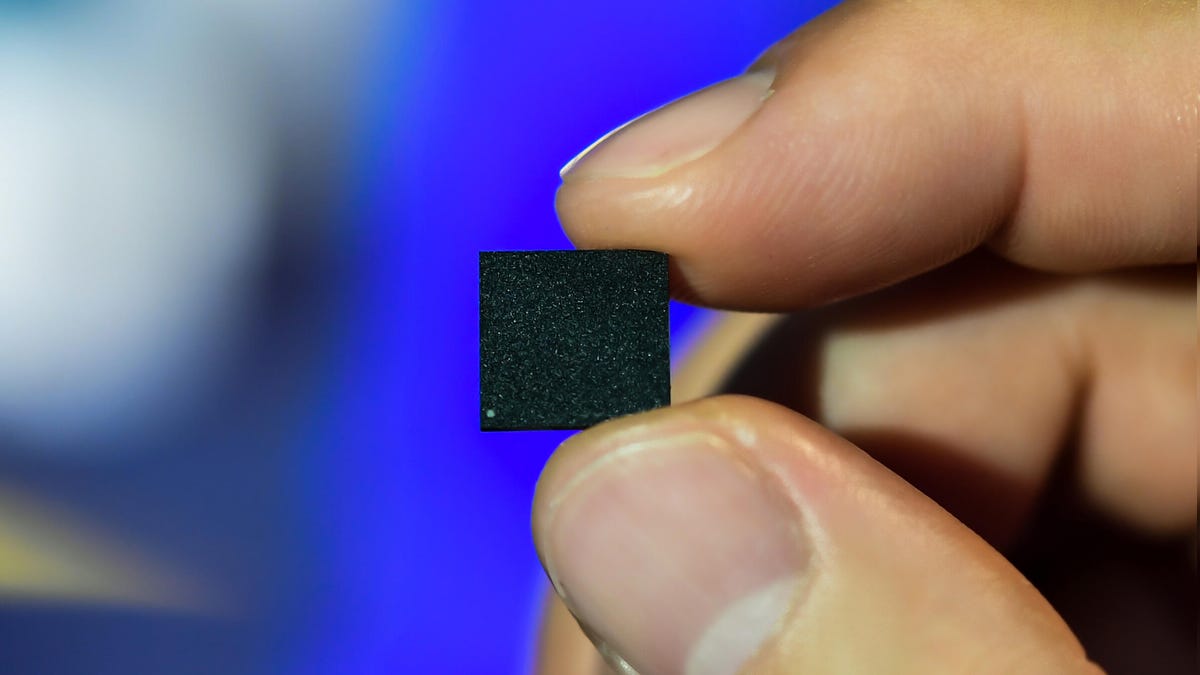Forget the Snapdragon 865. Qualcomm's midrange chip will spread 5G faster
The Snapdragon 765 has something its more powerful sibling doesn't: integrated 5G. That means less-expensive phones with longer battery life.

Qualcomm's Snapdragon 765 chip is the first to integrate 5G with the brains of the phone. That helps battery life and makes devices cheaper.
Qualcomm's Snapdragon 865 processor for high-end phones may be the star of the show at this week's Snapdragon Tech Summit in Hawaii. But it's actually the company's Snapdragon 765 and 765G chips for midrange phones that could supercharge the rollout of super-fast 5G networks and devices.
On Tuesday at its conference in Maui, Qualcomm unveiled its three newest processors for smartphones. Most of the Android phones coming out next year in markets like the US will use one of the three chips.
The Snapdragon 865, which Qualcomm offered more details about on Wednesday, will appear in premium smartphones like Xiaomi's Mi 10. It pairs with the company's X55 modem to enable download speeds of up to 7.5Gbps.
The Snapdragon 765 and 765G (the G stands for gaming) integrate the application processor, which is the brains of a phone, with the 5G modem that connects it to mobile networks. That's a first for Qualcomm when it comes to the new network connectivity. The integration will help increase battery life and bring down the cost of phones.
The Snapdragon 765 will be used by companies like Nokia phone maker HMD to introduce less-expensive 5G devices. That company's first 5G phone, coming in 2020, will use the Snapdragon 765, HMD said Tuesday.
"What this mobile platforms allows us to do is get to half the price of 5G devices today," HMD Chief Product Officer Juho Sarvikas said Tuesday in an interview at the Snapdragon Tech Summit. "Many consumers cannot afford or are not willing to pay $1,000-plus for the device."
While that cheaper cost comes with some compromises, the Snapdragon 765 doesn't mean handsets will miss out on high-end features like advanced artificial intelligence, better camera image processing and more intensive gaming.
"It will be half the cost, but you still experience the benefits of 5G," Sarvikas said. "It's easy to do something cheap, but it's a completely different story if you want to deliver on the actual reason for 5G."
5G promises to significantly boost the speed, coverage and responsiveness of wireless networks. It can run 10 to 100 times faster than a typical cellular connection today. It'll also boost how fast a device connects to the network with times as quick as a millisecond to start your download or upload. It's unclear what the killer app will be for 5G, but the technology is expected to transform gaming, multimedia and other industries.
Making trade-offs
Qualcomm this week is hosting its third annual Snapdragon Technology Summit on Hawaii's Maui island, where its major focus is 5G. This year's conference features executives from all four major US carriers (Verizon, AT&T, T-Mobile and Sprint), handset makers like Motorola, Oppo, HMD and Xiaomi, and software partners such as Google, Pokemon Go developer Niantic, Snapchat parent Snap and social media upstart TikTok.
Like in previous years, Qualcomm unveiled the names of its new mobile chips on Tuesday and gave more details about their capabilities on Wednesday.
Had Qualcomm integrated the 5G modem with the application processor in the Snapdragon 865, it would've needed to make compromises, Qualcomm President Cristiano Amon said in an interview Tuesday. Instead, it chose to release the most powerful chip possible -- the 865 -- paired with its fastest 5G modem -- the X55.
"We need to get to further advancements in the leading [manufacturing] node [for it] to make sense to integrate in the premium tier without losing performance, leadership and economies of scale," he said.
Rather than making trade-offs with the Snapdragon 865, Qualcomm made the compromises in the Snapdragon 765 and 765G. Instead of 7.5Gbps download speeds like on the Snapdragon 865, the 765 uses the X52 modem for download speeds of up to 3.7Gbps. While both chips use Qualcomm's fifth-generation AI engine, the Snapdragon 865 runs 15 trillion operations per second, while the 765 reaches 5 trillion operations per second.
The 7-series chip's graphics and CPU are also scaled down to let them fit on the same processor as the modem, and the cameras in phones using the 765 won't be as powerful as 865 devices.
"The difference [from the 865] is scaled-down version of features," Alex Katouzian, senior vice president and general manager of mobile at Qualcomm, said in an interview ahead of the summit.
In return, handset makers are getting phones that last all day without charging and the ability to price 765-powered phones much cheaper than those using the Snapdragon 865. Phones with the Snapdragon 765 or 765G should cost in the $450 to $550 range, Katouzian said Tuesday during a roundtable with journalists and analysts at the summit.
The first 5G devices have been expensive. Samsung's Galaxy S10 5G costs $1,300, while the regular S10 starts at $900. The Galaxy Note 10 Plus 5G retails for $1,300, while the 4G model starts at $1,100. By expanding 5G across its product line, starting with the 765 and 765G, Qualcomm will make the wireless tech available to more consumers. That's the only way for 5G to become mainstream, the company and its partners have said.
"Every 5G product launched for any carrier in the world [in 2019] was an incremental product to what they already had for the year," Ryan Sullivan, vice president of product development and engineering at Sprint, said in an interview Tuesday. "We didn't plan on these things serving a significant percentage of our user base."
But that all changes this coming year. "In 2020, the focus becomes about mass scale for 5G," Sullivan said.
That will be partly thanks to the Snapdragon 765 and 765G.

